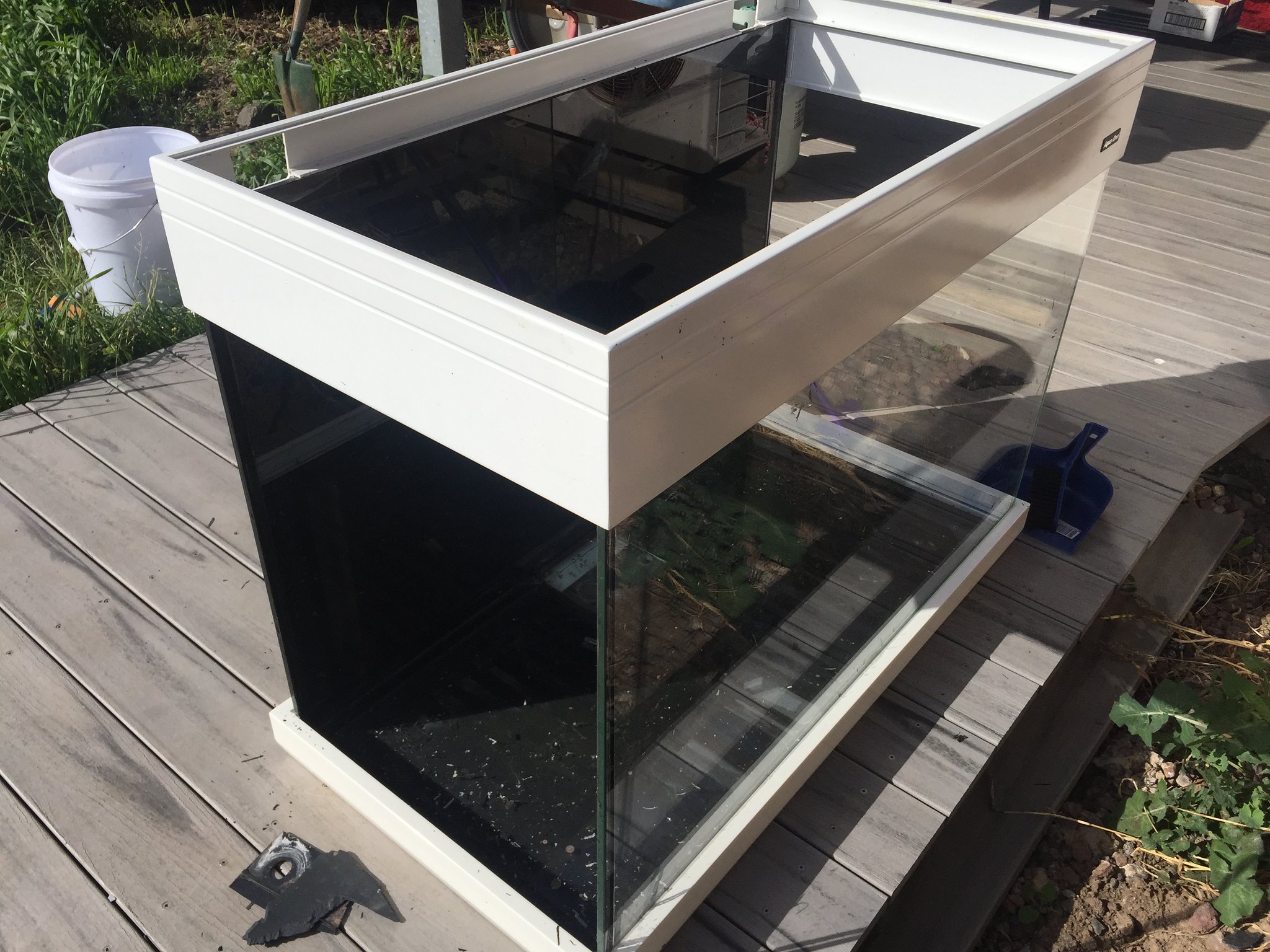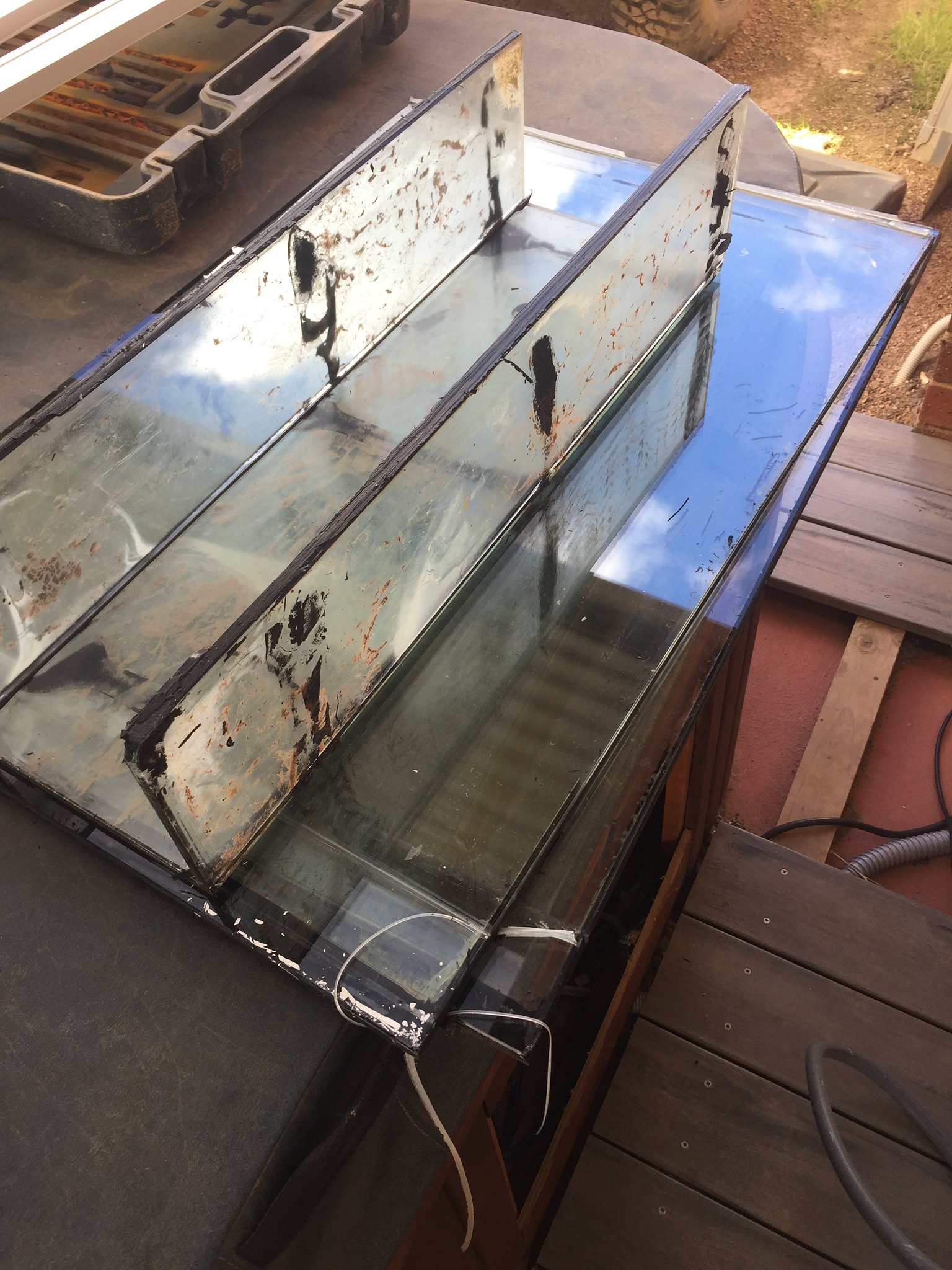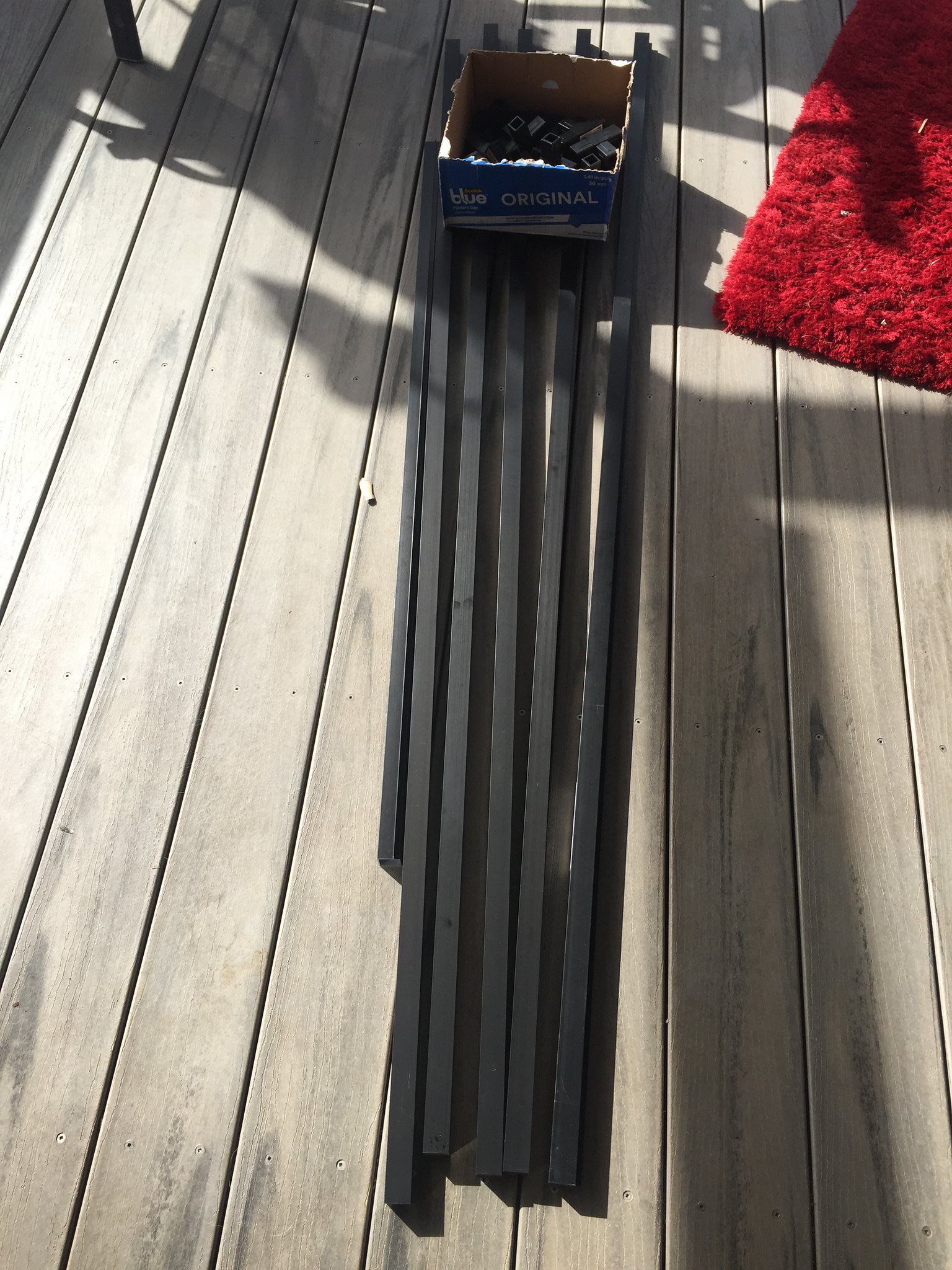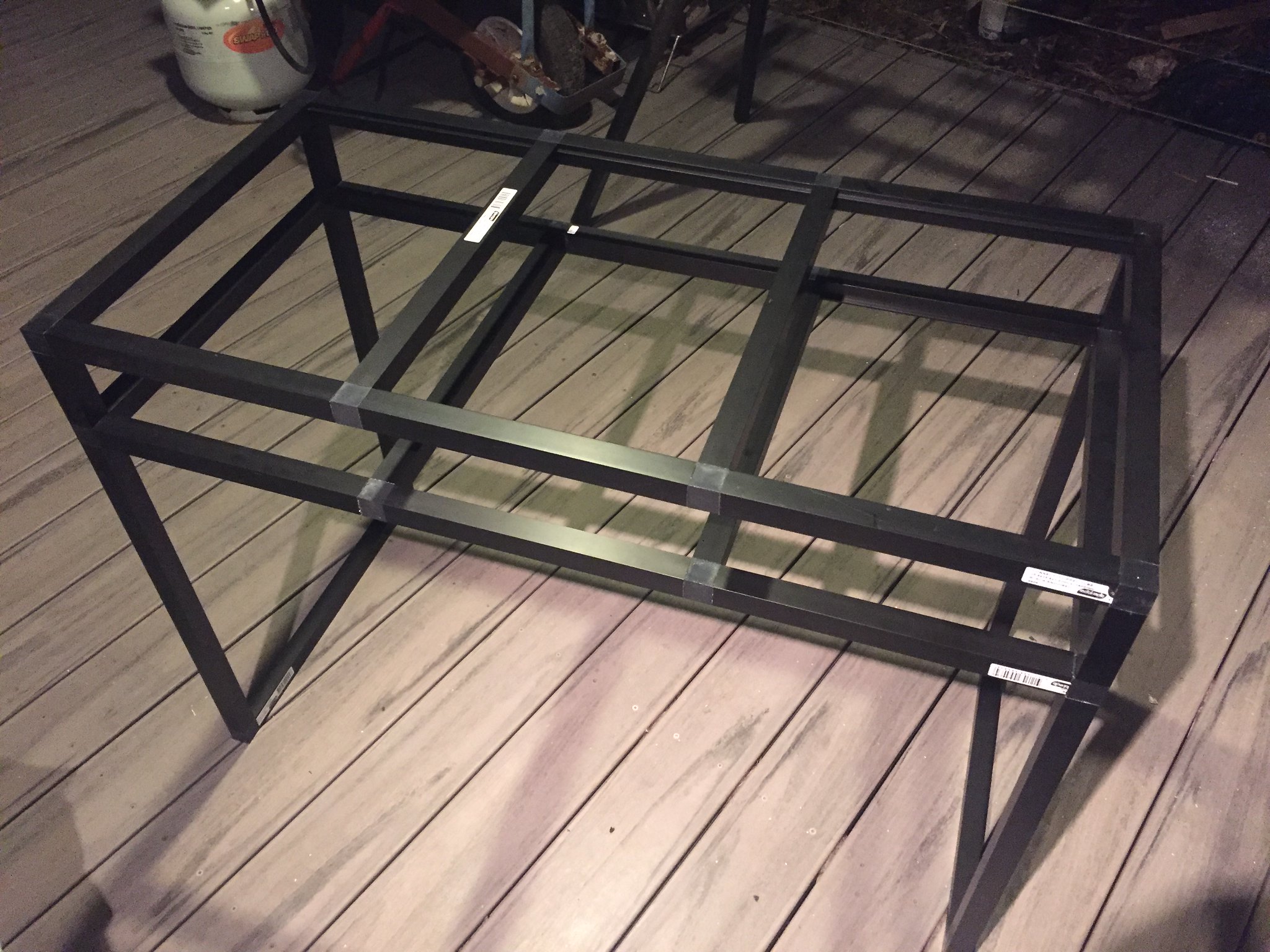So, thought I'd start a thread on the build of the enclosure for our (Mine and Sons) first snake. I started an intro thread where I started discussing the basics of what I have planned. It's here - https://www.aussiepythons.com/forum/threads/newbie-saying-hello.223230/#post-2519537 - if anyone wants to look.
This showed my old aquarium that is now devoid of fish and looking for something else to do. It is a nice looking tank and fits well in the room so this is what prompted me to convert it. As I mentioned in the other thread it won't be large enough long term if we end up with a larger species but it will do for now.
Given the main issues with a tank are lack of insulation and lack of access I decided the only way to really do a decent job was to strip down the tank. The pics below show what I've done so far.
The dividers for the wet sump were removed as were the 2 end panels which will be replaced with access doors.
Here are pics of the tank with the ends out and the glass that was removed - it's 10mm thick so strong stuff.
 Untitled by Gavin Gregory, on Flickr
Untitled by Gavin Gregory, on Flickr
 Untitled by Gavin Gregory, on Flickr
Untitled by Gavin Gregory, on Flickr
Next up I needed to put back some lateral support into the tank and also create somewhere to mount doors, lid, etc that are escape proof. Material of choice here was black anodised aluminium connect it sections. Although quite expensive, it is easy to work with, strong and super acurate. The pics below show before and after pics of this.
 Untitled by Gavin Gregory, on Flickr
Untitled by Gavin Gregory, on Flickr
And after an hour or so.
 Untitled by Gavin Gregory, on Flickr
Untitled by Gavin Gregory, on Flickr
The double frame at the top gives the tank its strength back and also allows for a flush fitting top lid and an internal mesh lid so I can put some items like some of the lights, etc up where they can't be seen. The ends form the openings for the side doors. This will be secured with neutral cure black silastic - the same stuff the tank was originally built with. Will glue it in tomorrow and get it back inside where I can start the fit out of it - that's when the questions will start regarding lighting, heating, vents, etc. I'm not really on a set budget so can spend what is needed to make this a perfect starting place for our new slithery friend.
This showed my old aquarium that is now devoid of fish and looking for something else to do. It is a nice looking tank and fits well in the room so this is what prompted me to convert it. As I mentioned in the other thread it won't be large enough long term if we end up with a larger species but it will do for now.
Given the main issues with a tank are lack of insulation and lack of access I decided the only way to really do a decent job was to strip down the tank. The pics below show what I've done so far.
The dividers for the wet sump were removed as were the 2 end panels which will be replaced with access doors.
Here are pics of the tank with the ends out and the glass that was removed - it's 10mm thick so strong stuff.
 Untitled by Gavin Gregory, on Flickr
Untitled by Gavin Gregory, on Flickr Untitled by Gavin Gregory, on Flickr
Untitled by Gavin Gregory, on FlickrNext up I needed to put back some lateral support into the tank and also create somewhere to mount doors, lid, etc that are escape proof. Material of choice here was black anodised aluminium connect it sections. Although quite expensive, it is easy to work with, strong and super acurate. The pics below show before and after pics of this.
 Untitled by Gavin Gregory, on Flickr
Untitled by Gavin Gregory, on FlickrAnd after an hour or so.
 Untitled by Gavin Gregory, on Flickr
Untitled by Gavin Gregory, on FlickrThe double frame at the top gives the tank its strength back and also allows for a flush fitting top lid and an internal mesh lid so I can put some items like some of the lights, etc up where they can't be seen. The ends form the openings for the side doors. This will be secured with neutral cure black silastic - the same stuff the tank was originally built with. Will glue it in tomorrow and get it back inside where I can start the fit out of it - that's when the questions will start regarding lighting, heating, vents, etc. I'm not really on a set budget so can spend what is needed to make this a perfect starting place for our new slithery friend.



